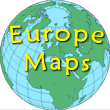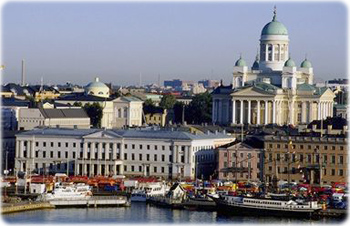
Finland
Finland is a country in northwestern Europe, part of Scandinavia. It is a land of vast green forests and sparkling lakes, of ultramodern buildings and old, walled castles. Its woodlands, which are its most important natural resource, are often referred to as Finland’s “green gold.” Helsinki is the capital and largest city of the country.
In Finland’s Arctic region, there is almost continuous daylight from May through July. During these months of “midnight sun,” Finland’s scenic coastal areas draw thousands of boaters. In the interior, Finland’s large tracts of unspoiled wilderness attract hikers from around the world.
Finland is sometimes grouped with the countries of Scandinavia, with which it maintains close ties. However, for centuries, Finland was a border zone between the rival powers of Sweden and Russia. After 700 years of Swedish domination, Finland fell to Russia in 1809. It first became an independent state in 1917, after the Russian Revolution. From the end of World War II to 1991, Finland was bound to the Soviet Union by strong economic ties and by a treaty of friendship and cooperation signed in 1948. After 1991, Finland moved toward closer relations with Europe and became a full member of the European Union in 1995.
Although Finland is one of the youngest nations in Europe, it is renowned for its distinct cultural traditions. Finland is especially noted for its contributions to modern architecture and industrial design. The sauna, or Finnish steam bath, is world-famous and part of the Finnish way of life.
Folk dancers in Finland.

Helsinki

|
Copyright © Geographic Guide - European countries. |
